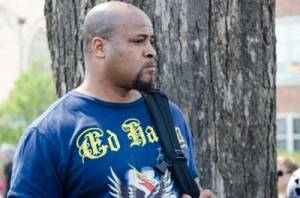From Shadowproof:
LGBTQ prison abolition group Black & Pink began publishing letters from inmates in solitary confinement last month in an effort to shed light on the abuse and harassment they suffer.

One prisoner recounts, “It’s very easy to be thrown in segregation merely for walking in a way an officer finds too sissylike.” (Blackandpink.org)
In a post introducing the series on their website, Black & Pink explained that last summer, their Chicago chapter contacted to over 100 inmates in isolation to ask for their experiences. They received nearly 40 responses, mostly from the Illinois Department of Correction and Marion federal prison.
The group writes:
We live in a time of growing knowledge of, and outrage about, solitary confinement. We hope this blog series expands our collective understanding about the horrors of solitary confinement and its particular impact on queer and trans people. More importantly, we hope it becomes another tool to help us end solitary confinement for all people, to move us away from a culture built on punishment and isolation and towards a culture based on restoration and community.
The true number of queer and trans inmates in solitary confinement is basically unknown. In addition to being subject to administrative segregation, punitive segregation and ‘therapeutic housing,’ many LGBTQ prisoners are placed in protective custody, in which they are moved to isolation to supposedly protect them from harm and harassment by other inmates. Protective custody figures are not included in tallies for solitary confinement.
The first installment of Black & Pink’s provides the public with a glimpse into the experiences of LGBTQ prisoners in isolation, including those not just targeted by other inmates but singled out by guards for the way they act or look as well. One inmate wrote:
It’s very easy to be thrown in segregation for merely walking in a way an officer finds too sissylike. I’ve been thrown in segregation because an officer felt my fingernails were too longs and girlie. My friend was thrown in segregation cause her eyes were lined.
Another told Black & Pink:
Often LGBTQ inmates are placed there simply because they are not wanted in the general populations. Some correctional officers use the opportunity to harass the LGBTQ inmates. We are literally in a cage and cannot just walk away! And most of the time we don’t deserve to be in solitary confinement
Sixteen percent of respondents to the National Transgender Discrimination Survey Report [PDF] said they had been incarcerated “for any reason,” compared to less than three percent of the general population who said they had been incarcerated “at some point in life.” Seven percent of respondents to the survey said they had been arrested and incarcerated by law enforcement solely on a basis of their identity and sexual orientation.
This discrimination is life threatening and takes many forms behind bars, going well beyond the use of solitary. Last year, for example, a class-action lawsuit brought by inmates alleged sheriff’s deputies in San Bernadino County, California, skipped legally-mandated safety checks for LGBTQ inmates “due to unwarranted dislike by SBCSD employees and an unwarranted fear of AIDS.”
The Bureau of Justice Statistics found that between 2011 and 2012, “inmates who reported their sexual orientation as gay, lesbian, bisexual, or other were among those with the highest rates of sexual victimization.” That study [PDF] found roughly 12 percent of LGBTQ prisoners and over 8 percent of jail inmates reported being “sexually victimized” by another inmate, with an additional 5.4 percent of prisoners and 4.3 percent of jail inmates victimized by staff.
The abuses faced by queer and trans prisoners — particularly those who are black or brown — deserve far greater attention. I look forward to the rest of this series and reading the first hand experiences of trans and queer inmates in isolation.
Filed under: Analysis, News, Queer Liberation, Uncategorized | Tagged: California, Chicago, Illinois DOC, LGBTQ, LGBTQ prisoners, queer prisoner solidarity, queer prisoners, San Bernadino County, Shadowproof, solitary confinement, trans prisoners | Leave a comment »



 From comrades from NATO 3 Support:
From comrades from NATO 3 Support:



 From Chicago ABC:
From Chicago ABC: From
From 